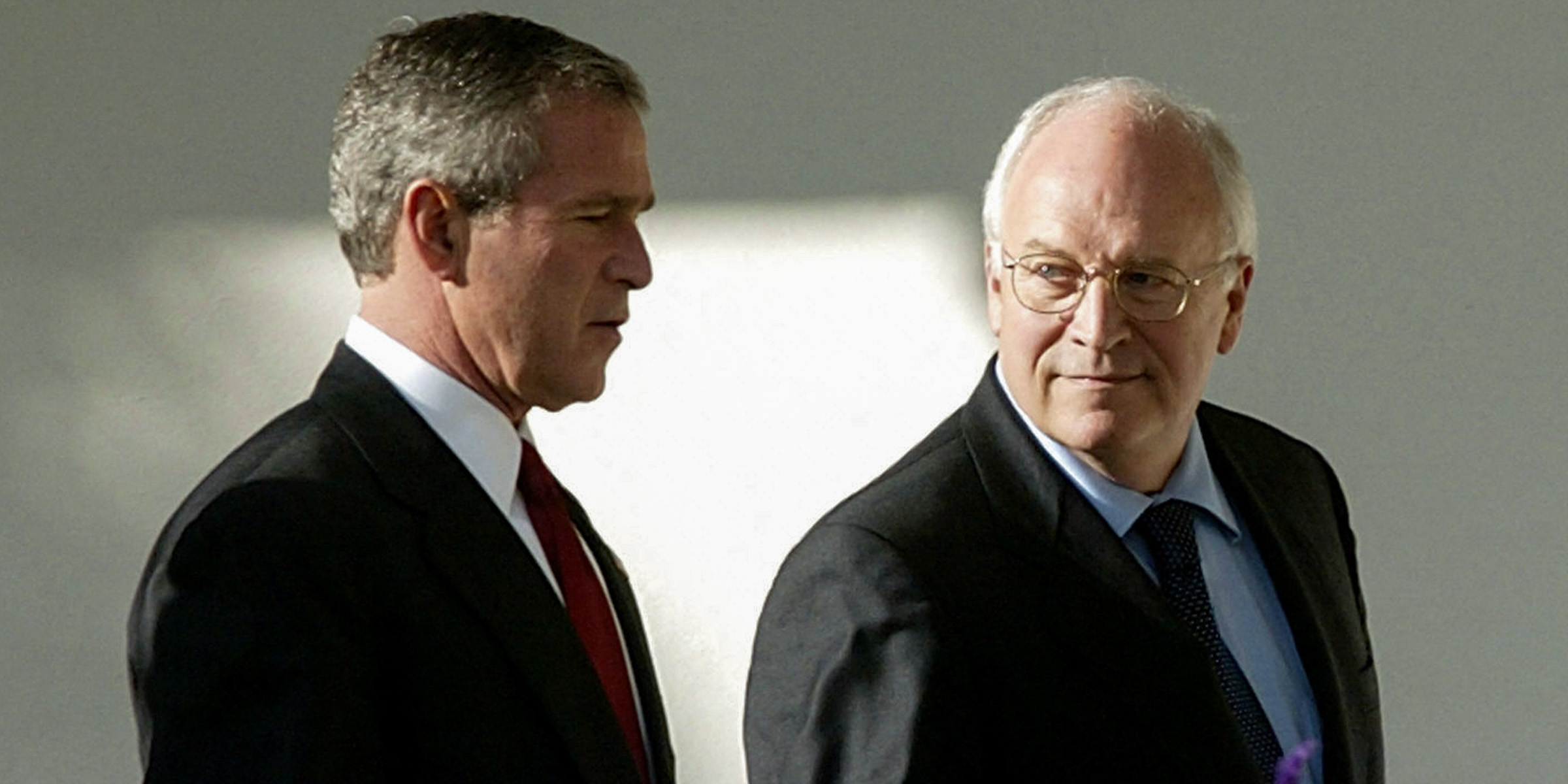
Former Vice President to George W. Bush, Dick Cheney, Dies at 84 – Details
Dick Cheney, a towering figure in American politics and former vice president to George W. Bush, has died. His family released a statement revealing key details surrounding his final moments.
In a somber moment that marks the end of a towering era in American politics, former US Vice President Richard B. "Dick" Cheney has died at the age of 84. The family released a heartfelt statement the day after his passing.

Former US Vice President Dick Cheney listens as during a Constitution Day lecture at American Enterprise Institute on September 19, 2022, in Washington, DC. | Source: Getty Images
Surrounded by Love in His Final Moments
His family confirmed that the staunch conservative titan died on November 3, 2025, leaving behind a legacy as complex as it was commanding. The statement from the Cheney family paints a tender picture of his final hours.
"His beloved wife of 61 years, Lynne, his daughters, Liz and Mary, and other family members were with him as he passed," it read. The cause of death? "The former vice president died due to complications of pneumonia and cardiac and vascular disease."
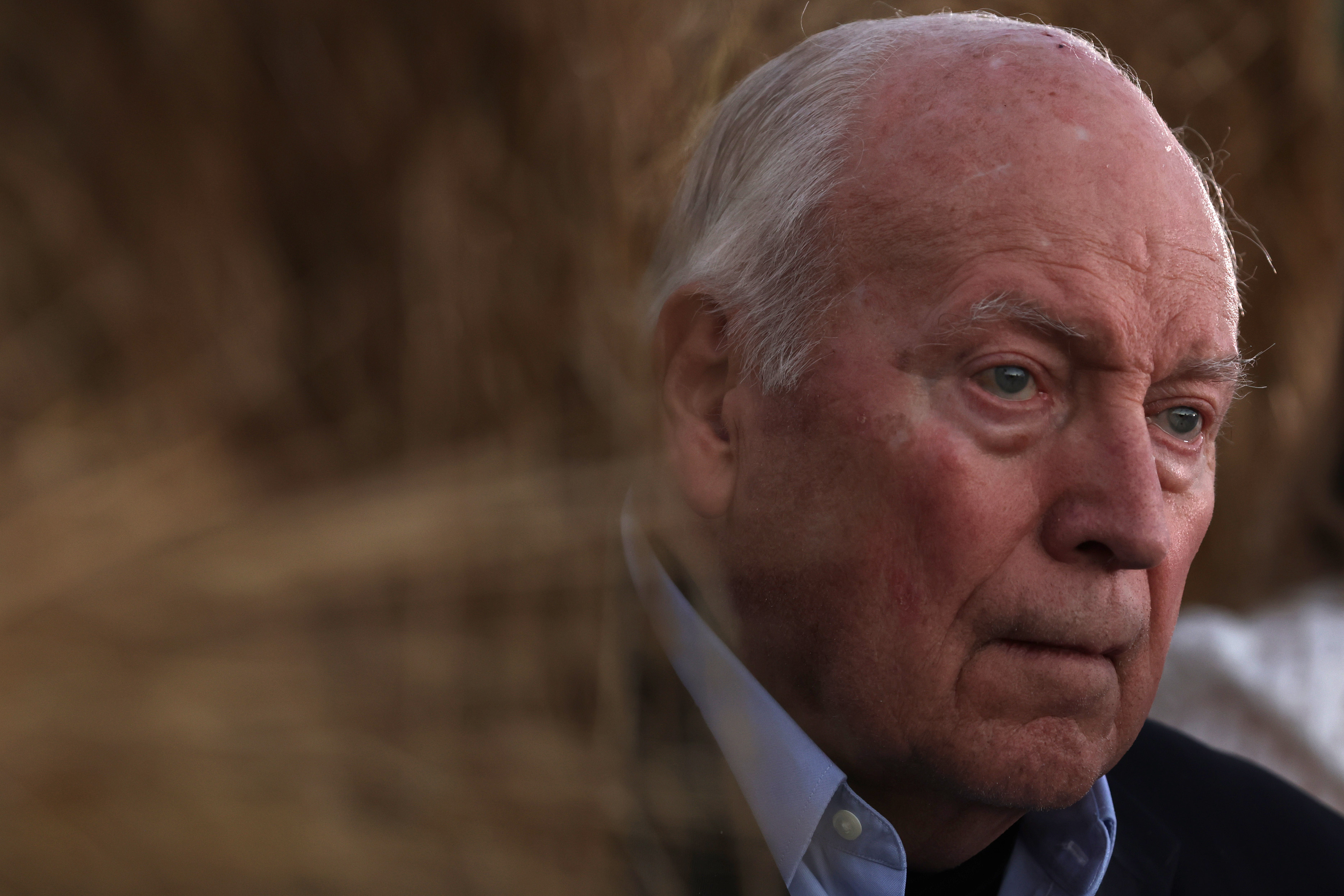
Former US Vice President Dick Cheney during a primary night event on August 16, 2022, in Jackson, Wyoming | Source: Getty Images
Stricken, Scarred, and Still Standing: The Vice President Who Refused to Fall
Over the years, Cheney has danced far too often with death. From battling a lifetime of heart attacks to surviving a brazen Taliban suicide bombing, and even accidentally shooting a man in the face, Cheney's life has read like a political thriller with the body count to match.
In March 2012, at the age of 71, Cheney's office revealed he had undergone heart transplant surgery. The operation took place at Inova Fairfax Hospital in Falls Church, Virginia. His staff disclosed that Cheney had been waiting silently and patiently on the transplant list for more than 20 months.
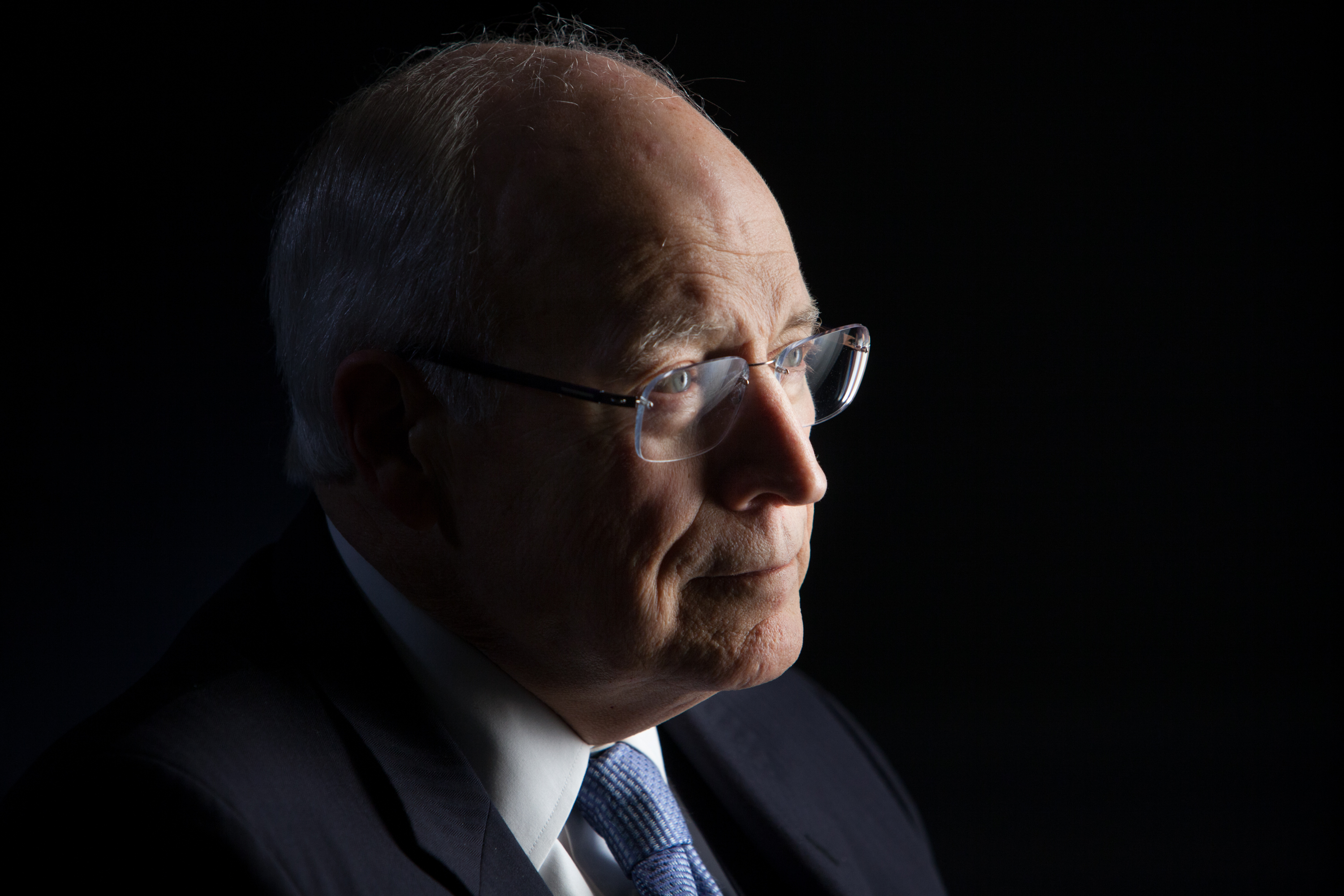
Former Vice President Dick Cheney is interviewed by Chris Whipple for "The Presidents' Gatekeepers" on March 17, 2012, in St. Michaels, Maryland | Source: Getty Images
"Although the former vice president and his family do not know the identity of the donor," the office added, "they will be forever grateful for this lifesaving gift." The politician's heart has long been his greatest adversary.
The former vice president has suffered at least five heart attacks since 1978, the first at just 37 years old. In June 2010, just two years before his transplant, Cheney was rushed to George Washington University Hospital due to complications from coronary artery disease.
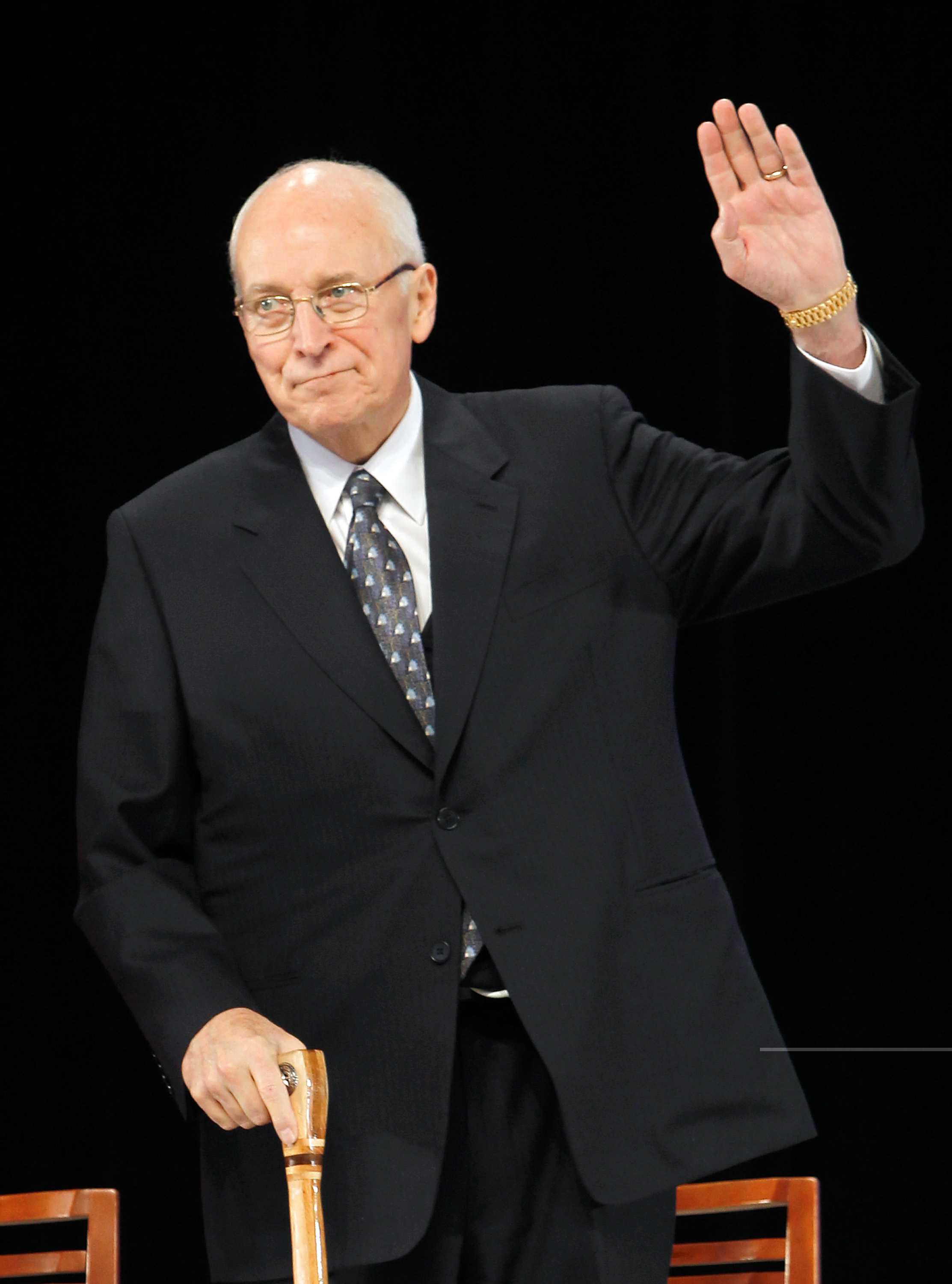
Former Vice President Dick Cheney during the George W. Bush Presidential Center groundbreaking ceremony on November 16, 2010, in Dallas, Texas | Source: Getty Images
To keep him alive, doctors implanted a left ventricular assist device (LVAD), a machine that helped his failing heart continue pumping blood. Back in June 2001, irregular rhythms forced doctors to install a pacemaker, an ominous sign that Cheney's health had been declining behind closed doors for years.

Vice President Dick Cheney leaves the weekly Senate luncheon on December 11, 2001 | Source: Getty Images
'We Knew Cheney Would Be There:' Taliban Bomber Strikes as the Vice President Sleeps
But illness wasn't the only predator stalking the former vice president. In a terrifying brush with terror and bloodshed, Cheney found himself squarely in the crosshairs of a suicide bomber. In February 2007, at Bagram Air Base in Afghanistan, Cheney made a surprise overnight visit.
The attacker struck at the main gate during the politician's stay, killing as many as 23 people and injuring 20. The Taliban chillingly claimed responsibility, declaring Cheney was their target. He emerged unharmed, but others weren't so lucky.

Vice President Dick Cheney at the ceremonial swearing-in of Secretary of Veterans Affairs James Peake on December 20, 2007, in Washington, DC. | Source: Getty Images
Despite the chaos, he carried on, later traveling to Kabul to meet Afghan President Hamid Karzai. The Afghan government reported 23 fatalities, but the US military claimed only nine deaths. The confusion surrounding the final count was never fully clarified, a shadow hanging over the grim morning.
The North Atlantic Treaty Organization (NATO) later confirmed that among the dead were a US soldier, an American contractor, and a South Korean soldier.
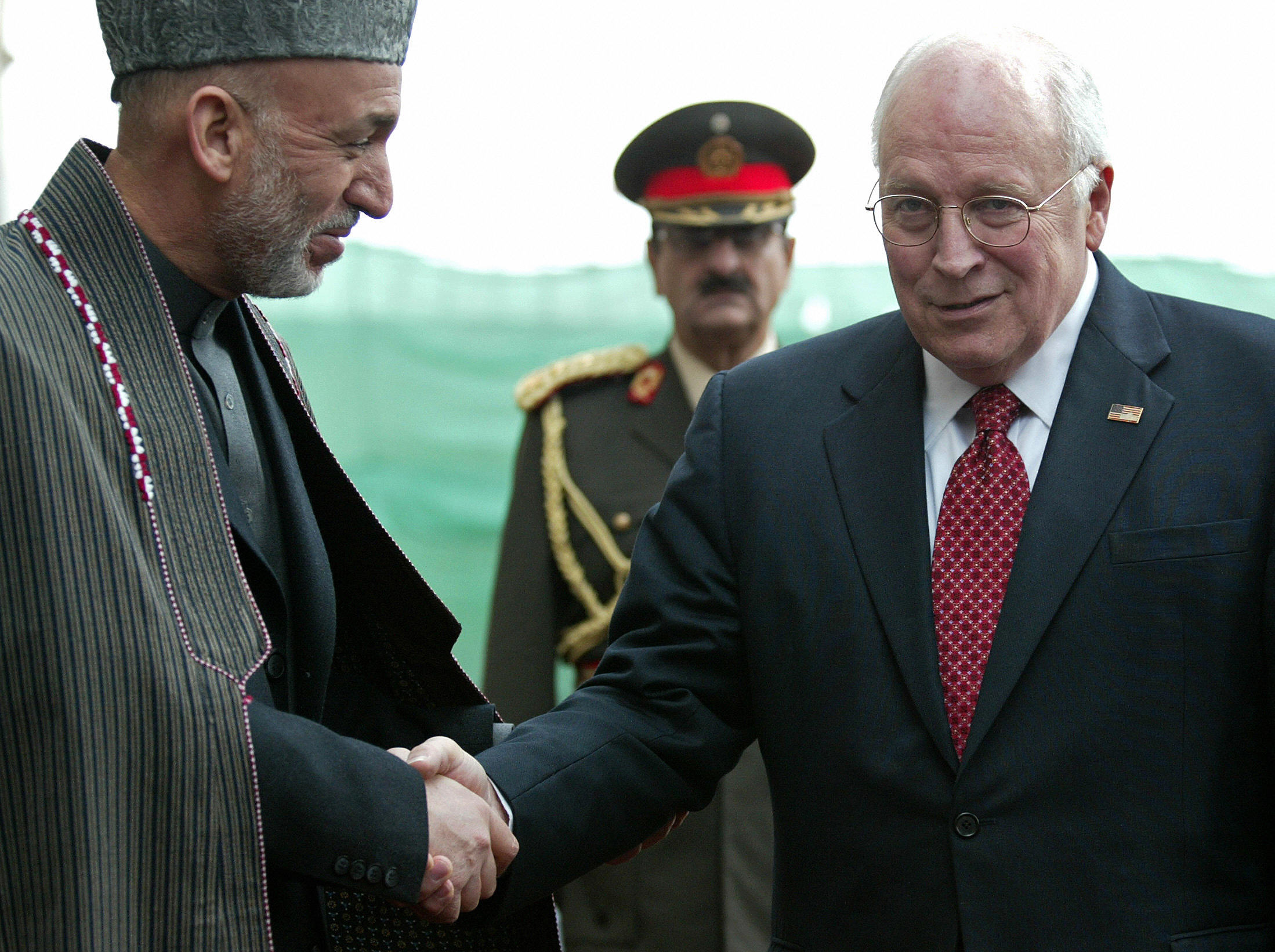
Afghan President Hamid Karzai meets US Vice President Dick Cheney at the Presidential Palace in Kabul on February 27, 2007 | Source: Getty Images
Cheney explained he had remained at the base due to poor weather. "At 10 a.m. I heard a loud boom," he recounted. Secret Service agents rushed him to a bomb shelter. "As the situation settled down... I went back to my room until it was time to leave."
When pressed by reporters, he made it clear that canceling his trip was never an option. Outside the base, the carnage was undeniable. At least 12 bodies in black bags and wooden coffins were seen being moved into a nearby market, where mourning locals gathered.
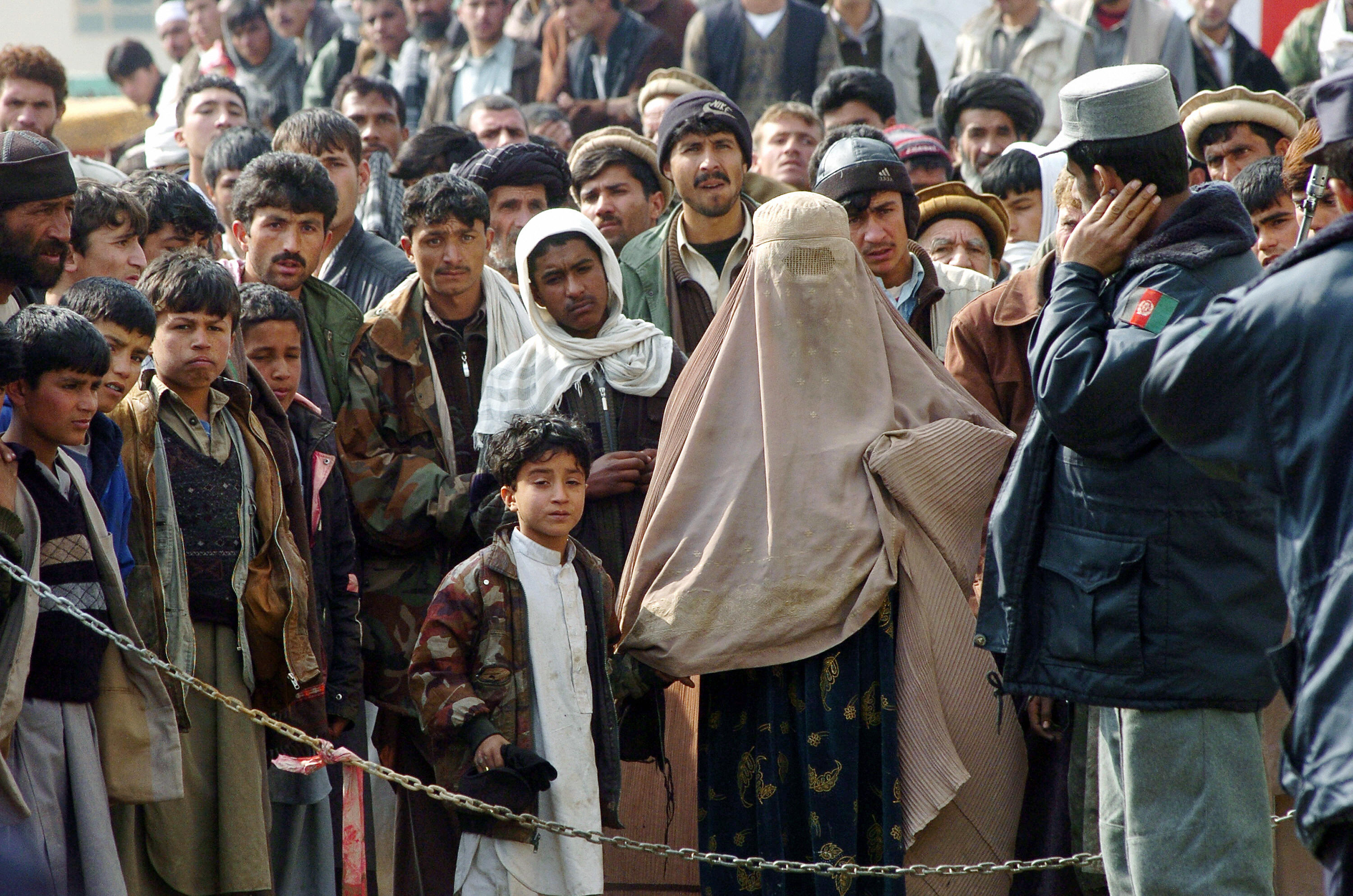
A burqa-clad Afghan woman makes enquiries about her relatives to an Afghan policeman as a crowd gathers at the gate of Bagram air base on February 27, 2007 | Source: Getty Images
Despite Major William Mitchell's statement that the explosion did not pose a direct threat, adding, "He wasn't near the site of the explosion," even though the Taliban insisted otherwise. Taliban spokesman Qari Yousef Ahmadi was chillingly specific, "We knew that Dick Cheney would be staying inside the base," he told the press by phone.
The attacker was trying to reach Cheney. He identified the bomber as Mullah Abdul Rahim. The blast occurred near the first of at least three fortified checkpoints surrounding Bagram Air Base, which housed over 5,000 US troops and 4,000 coalition personnel and contractors.
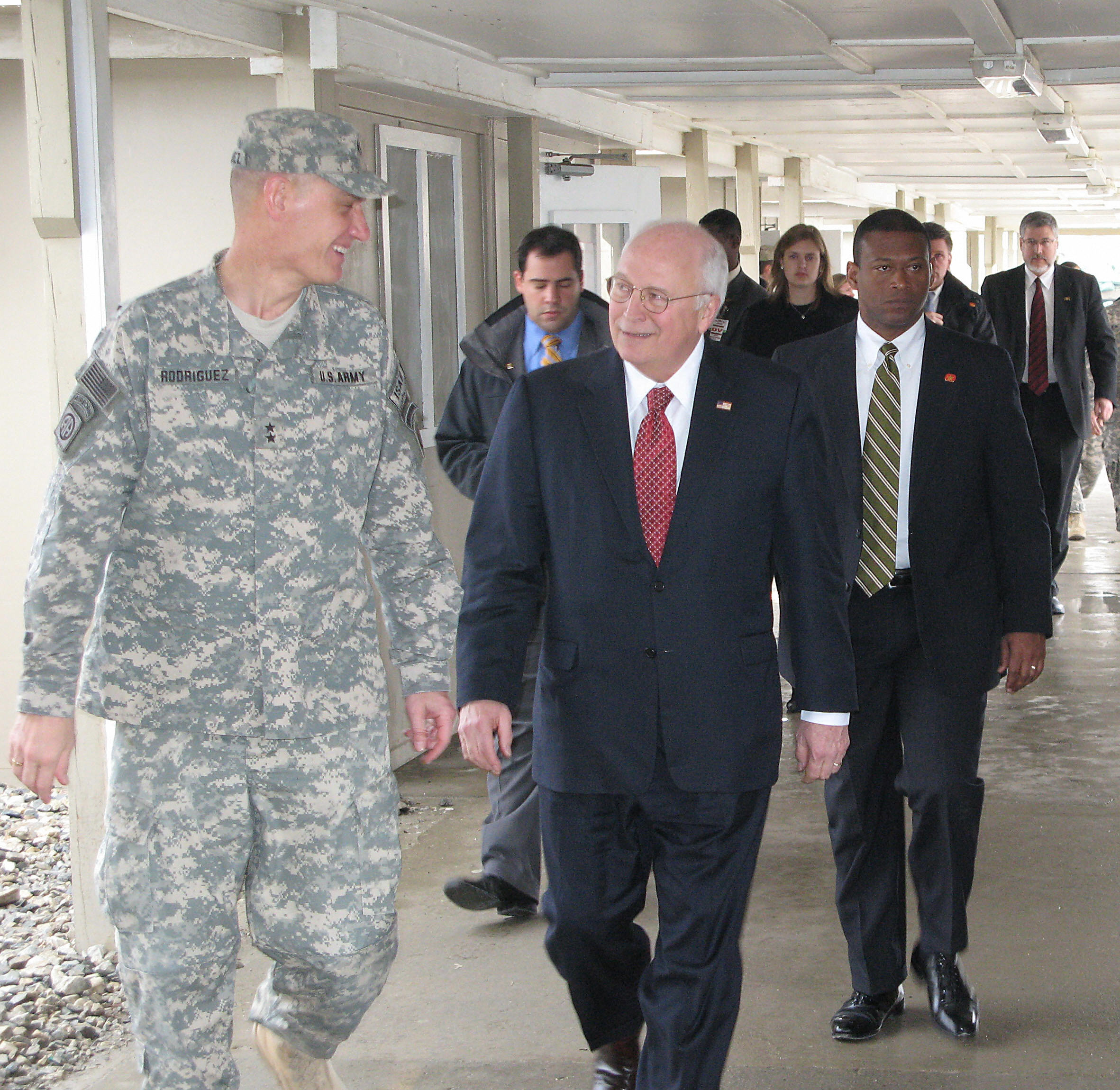
Major General David Rodriguez walks with US Vice President Dick Cheney after having breakfast with US soldiers at Bagram Air Base in Afghanistan | Source: Getty Images
Lieutenant Colonel James Bonner, Bagram's operations commander, confirmed that the attacker never breached the base. "When he realized he would not be able to get onto the base, he attacked the local population," Bonner said bluntly.
Cheney later mused that the assault was part of the Taliban's broader agenda. "Striking at Bagram with a suicide bomber I suppose is one way to do that [sic]," he said.

US Vice President Dick Cheney with Afghan President Hamid Karzai at the Presidential Palace in Kabul | Source: Getty Images
The Shot Heard Around the World: Cheney Shoots Hunting Buddy
But Cheney hasn't just faced danger — he has accidentally inflicted it, too. In a bizarre twist of fate, he was the one holding the gun during an incident that would haunt both men for years. In February 2006, during a quail hunting trip in South Texas, Cheney accidentally shot fellow hunter Harry Whittington in the face.
The aftermath was ghastly. Five years later, in 2010, Whittington still had a tremble in his voice; a "warble," he called it, perhaps unknowingly invoking the bird that caused the carnage.

Harry Whittington speaks to the media on February 17, 2006, from Christus Spohn Corpus Christi-Memorial Hospital in Corpus Christi, Texas | Source: Getty Images
The shooting left Whittington permanently altered. A pellet pierced his larynx, changing his voice forever. Around 30 metal fragments remained embedded in his face, neck, torso, and near his heart.
He pointed to his eye socket, his forehead, and his hand, where visible lumps from birdshot still surfaced. Occasionally, strangers would approach, stunned by the damage. For months, lead shrapnel worked its way through his skin.

Vice President Dick Cheney listens as US President George W. Bush speaks to the press on December 11, 2006, at the State Department in Washington, DC. | Source: Getty Images
Still, many fragments were too deep to remove. He joked darkly that he could still pass through a metal detector unnoticed. The accidental blast happened in a split second. Cheney had turned to fire at a winging quail, unaware Whittington had stepped into the line of fire.
Struck in the face, neck, and upper body, Whittington recalled only the moment of impact. "All I remember was the smell of burning powder," he said. "And then I passed out."

Harry Whittington, the man wounded by Vice President Dick Cheney in a hunting accident, speaks to the media | Source: Getty Images
Paramedics first rushed him to a hospital in Kingsville, then airlifted him to Corpus Christi. But in a move that sparked intense suspicion, the shooting wasn't made public until the next day.
Katharine Armstrong, the ranch owner's daughter, notified a local reporter and claimed Whittington had stepped into the line of fire. White House spokesman Scott McClellan echoed that sentiment. Cheney, meanwhile, remained silent for four days.

Vice President Dick Cheney rests on President George W. Bush's chair in the Oval Office at the White House, on December 4, 2006, in Washington, D.C. | Source: Getty Images
He only addressed the incident in an interview, where he accepted responsibility but never apologized, saying, "Ultimately, I am the guy who pulled the trigger." As Whittington recovered in the hospital, reporters swarmed the building.
One disguised themselves as medical staff to snap a photo. Security guards were posted outside his room. Upon his release, it was Whittington, not Cheney, who issued an apology. "My family and I are deeply sorry for all that Vice President Cheney and his family have had to go through this past week," he said.
Back home in Austin, the ordeal didn't end. Reporters stalked his house, phoned incessantly, and even sent gifts — flowers, fruit baskets — desperate for an exclusive. TV networks offered to fly him to New York, but Whittington declined.
"That was the last thing I wanted to do," he said. Still, the media frenzy raged on. Late-night comedians mocked the shooting, and Cheney himself turned the incident into a national punchline. Eventually, the world lost interest. And to Whittington's quiet, eternal relief, the spotlight moved on.

Harry Whittington stands on the roof of his office building, where he still practices law in Austin, Texas, on October 7, 2010 | Source: Getty Images
A Life Devoted to Power and Patriotism
Few men have held as much sway behind the curtain of American power as Cheney. Serving as White House Chief of Staff, Wyoming congressman, Secretary of Defense, and Vice President, Cheney shaped policy from the shadows and frontlines alike.
Described by his family as a great and good man who instilled values of courage, honor, love, kindness, and fly fishing, he was not just a political force, but a pillar of strength within his home.
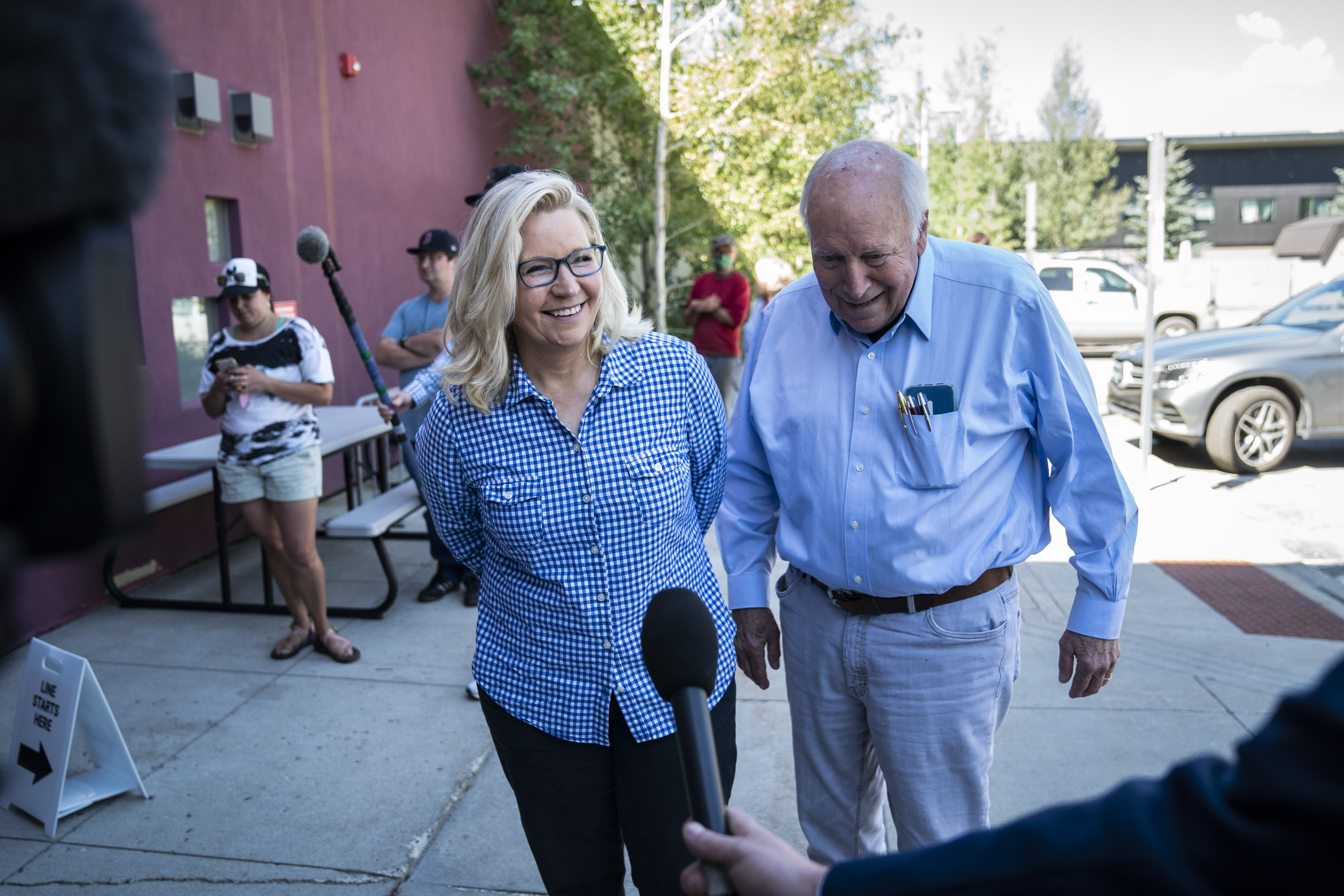
Rep. Liz Cheney with her father, former Vice President Dick Cheney, to vote at the Teton County Library on August 16, 2022, in Jackson Hole, Wyoming | Source: Getty Images
His most controversial chapters came during his tenure, including the time he served as the architect of the Gulf War as George H.W. Bush's Secretary of defence. Ten years later, he was George W. Bush's vice president.
Under George Jr., he served as the vice president, where he was a key architect of the 2003 US invasion of Iraq. That decision, praised and reviled in equal measure, would define global geopolitics for a generation.
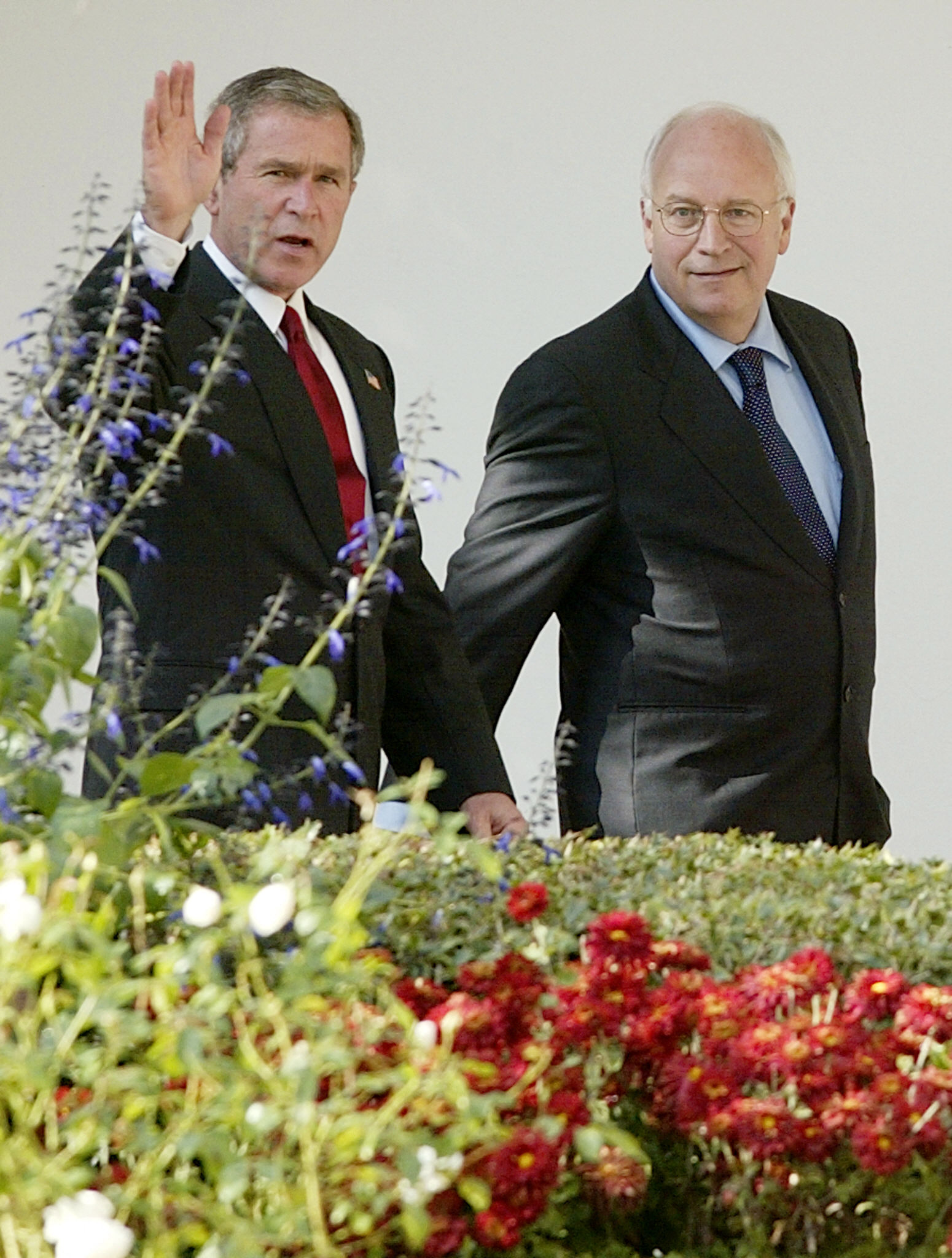
US President George W. Bush walks with Vice President Dick Cheney at the White House on October 29, 2003, in Washington, D.C. | Source: Getty Images
Yet despite the storm clouds of history, his family remains resolute, saying they are deeply grateful for all he did for the country and feel blessed to have loved and been loved by the noble giant of a man.
The information in this article is not intended or implied to be a substitute for professional medical advice, diagnosis or treatment. All content, including text, and images contained on news.AmoMama.com, or available through news.AmoMama.com is for general information purposes only. news.AmoMama.com does not take responsibility for any action taken as a result of reading this article. Before undertaking any course of treatment please consult with your healthcare provider.
news.AmoMama.com does not support or promote any kind of violence, self-harm, or abusive behavior. We raise awareness about these issues to help potential victims seek professional counseling and prevent anyone from getting hurt. news.AmoMama.com speaks out against the above mentioned and news.AmoMama.com advocates for a healthy discussion about the instances of violence, abuse, sexual misconduct, animal cruelty, abuse etc. that benefits the victims. We also encourage everyone to report any crime incident they witness as soon as possible.
